You can evaluate several metrics to determine whether your ad strategy is working. One of these is CTR or Click-through rate, a key indicator that brings valuable insights into campaigns from different perspectives.
But What Is CTR in Google Ads? It’s a fundamental question when discussing better PPC marketing campaigns aiming at improving the number of clicks and further increasing conversions. Read our following CTR Google Ads guide and learn everything you need to know about CTR, how this metric can help you create a successful campaign in your Google Ads account, and more.
What Is CTR in Google Ads?
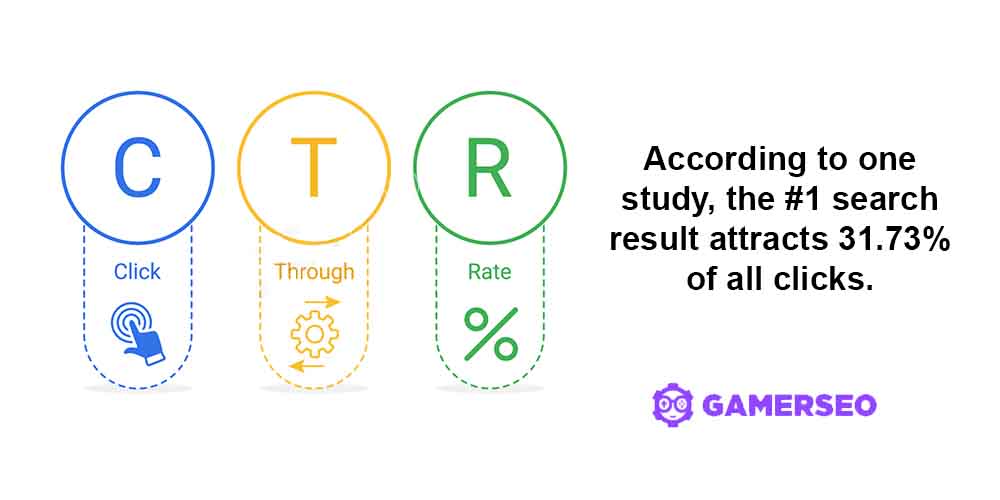
Click-through rate, or CTR, is a metric that lets you know the percentage of successful clicks regarding the number of people who saw a specific ad. CTR helps you determine your cost per click and ad rank. As such, it is a relevant KPI ad factor to calculate the Quality Score of Google. The higher Google’s Quality Score, the better your position in the search engine.
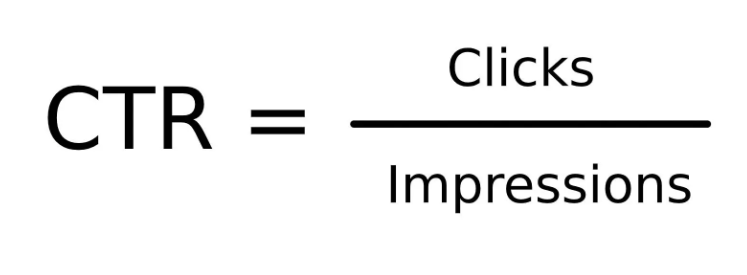
It corresponds to the total number of ad views that lead to successful clicks. CTR is an excellent indicator of the performance of your search advertising campaigns.
In other words, the click-through rate is the clearest indicator of how your Google Ads campaign works, providing crucial information to enhance your strategy and optimize your ad extensions. The final goal is to reach more potential customers and generate more clicks, which can lead to higher conversions.
Still, although CTR may be the main indicator of your PPC campaign in Google Adwords, it shouldn’t be the only one.
Experts indicate that considering CTR and CPC is relevant to successfully measuring your paid search and display strategy. But although these are healthy metrics, other KPIs such as Return-on-Advertising –ROA– should be included as a regular practice in the main digital marketing practices.
Why Is CTR Good for Your Business?
CTR is crucial to determine the success of your PPC campaign by indicating the number of users actively searching and clicking on your ads. Hence, CTR is fundamental to improve performance related to ads considering the following:
- Click-through rate is an essential factor in search engine rankings;
- Click-through rate directly affects ad costs and ad rank;
- Click-through rate is a measure of engagement.
CTR also contributes to your keyword’s expected CTR, a component of Ad Rank.
We’ve found that high click-through rates lead to high-quality Scores and correlate with higher conversion rates.
What Factors Affect the Average PPC CTR of Your Google Ads Campaign?
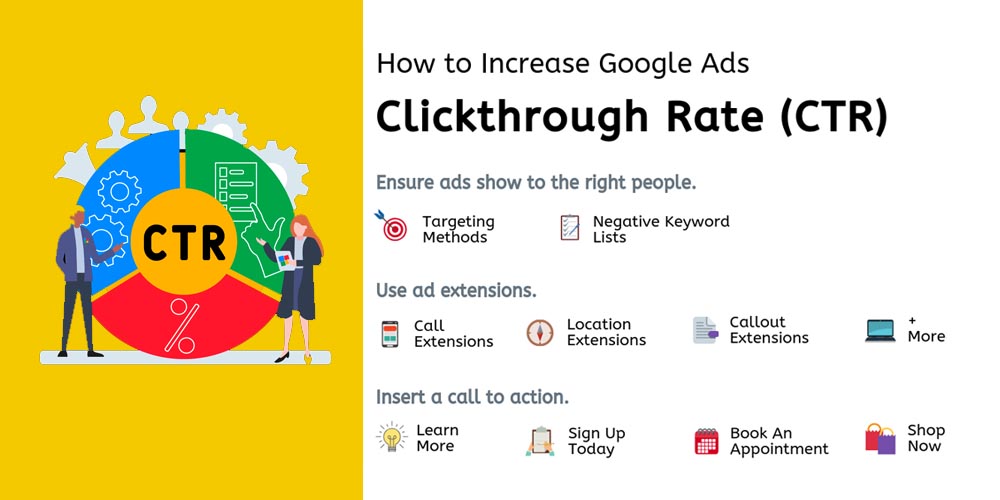
Seven main factors define the correct performance of your advertising according to the CTR benchmarks.
The Headline
The headline is likely the first that ad viewers see when facing your ad while navigating the web. It’s a crucial part of any ad aiming at a good click-through rate since readers first interact with this part of the ad. Consequently, it should stand out immediately over other sections and competitors’ ads.
Dull headlines in the search network may lead to drops in metrics and even give a bad impression to your target audience. However, a headline no longer than 60 characters and straight to the point should generate the highest CTR possible.
The Ad Copy
The ad copy corresponds to the general description of the ad. Good Google Ads captivate viewers via an excellent copy aiming at potential customers’ needs and expectations.
In this ad section, you have 80 characters to effectively communicate your idea and the main concept behind the offer, product, or ad. The idea is to follow what you first established in the headline and encourage the reader to click the ad. This action will drive the customer to your landing page, where the sale will occur.
Keywords
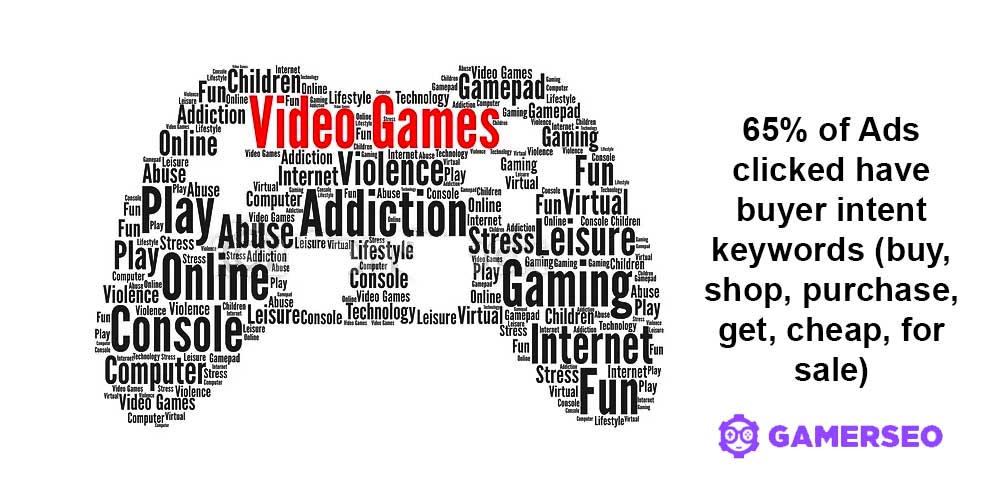
Keywords must be included in every ad part, from the headline to the call-to-action button. Yes, we know it may sound a bit obvious, but remember that the more accurate and precise your keywords are, the higher your CTR will be. It’s a law in the Google display network and search ads.
Still, the keywords you’re bidding on within the copies should be proper for your industry, product, profile, and intentions. Conduct keyword research through Google Keyword Planner, SEMRush, Ahrefs, etc., for the purposes mentioned above. You should also check what keywords are used by your direct competitors.
Note. Pay attention to negative keywords to prevent your business from attracting bad leads or low-quality visitors.
The Ad Position or Rank
The ad rank is your ads’ position on the search engine results pages or SERPs. As you can infer, Google Ads does not include every ad on the first page of SERPs; thus, the American giant uses an auction system to define what ads go first. In this sense, the first ads will receive higher clickthrough rates.
Increasing bids is the common way of improving the ad rank. Still, optimizing headlines and copies by including a main keyword and other factors also helps to improve position in SERPs.
Ad Extensions
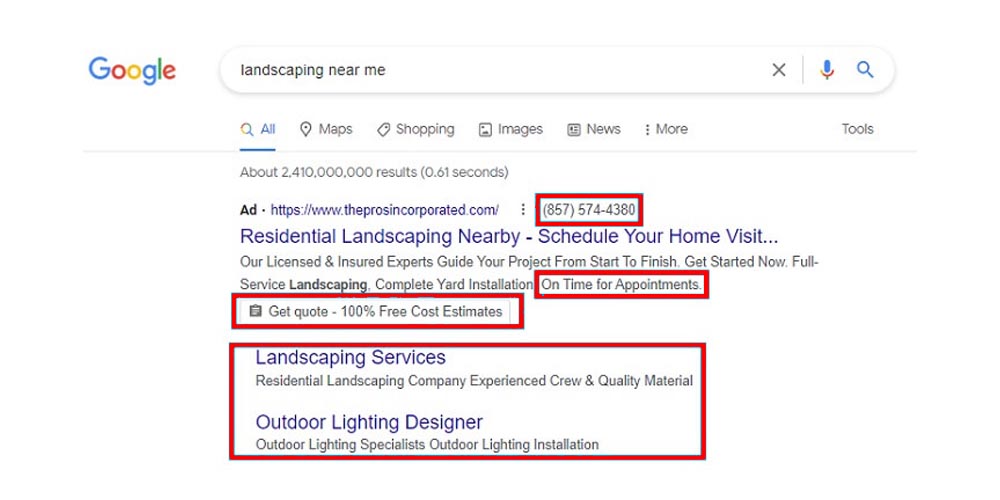
Ad extensions are interesting features provided by Google Ads that increase the size of ads and expand their impact and influence. This extension makes your advertisement stand out, aiming at more precise audience targeting. Next, you will find some extensions you should check:
- Location extensions. Here, you indicate the physical location of your business, encouraging customers to visit your headquarters to complete a conversion.
- Sitelink extensions. These correspond to an extra line of text when your ad appears at the top of SERPs. Google Ads can display up to 4 sitelinks. Sitelinks are a great way to use power words and highlight more benefits of what makes your product different.
- Call extensions. Although some marketers believe that calls are not mandatory in the contemporary world, call extensions still play an important role in engaging with customers, especially for companies whose sales process and lead generation involve call interactions.
- Structured Snippet Extensions. These extensions display data in the search results immediately under description lines. You can add up to ten values per snippet. Remember that data and real numbers always help to provide a good CTR for Google.
CTA or Call-to-Action
A well-structured call-to-action often encourages users to click on a particular ad and get them to click through. The CTA is directly related to the click-through rate – CTR – and the total number of clicks your ads will receive during the campaign.
Creating a good CTA is a challenge. Just like headlines or keywords, call-to-action buttons change according to the ads by industry. In gaming and tech businesses, it is recommended to avoid generic CTA, such as “click here,” and provide a creative approach by mentioning unique benefits.
Visuals
Everything enters through the eyes. We are visual beings and mostly judge content and quality according to what we see. This condition is not different when adjusting ad formats or creating designs for display ads, YouTube ads, and other social media ads.
Google says that average CTRs improve when including an image in the advertisement. This way, advertisers know incorporating graphics, photos, or even videos is crucial when creating a PPC online marketing campaign. In a nutshell, engaging images increase CTR metric by 10%.
What Is the Average CTR on Google Ads
As we mentioned, CTR for Google Ads changes according to the industry and branded keywords that are successfully used. Differences are notable. The average CTR goes from 4.76% for Attorney and Legal Services to 11.78% for Arts and Entertainment.
Putting together all the fields and business categories, Google Ads average CTR amounts to 6.11%.
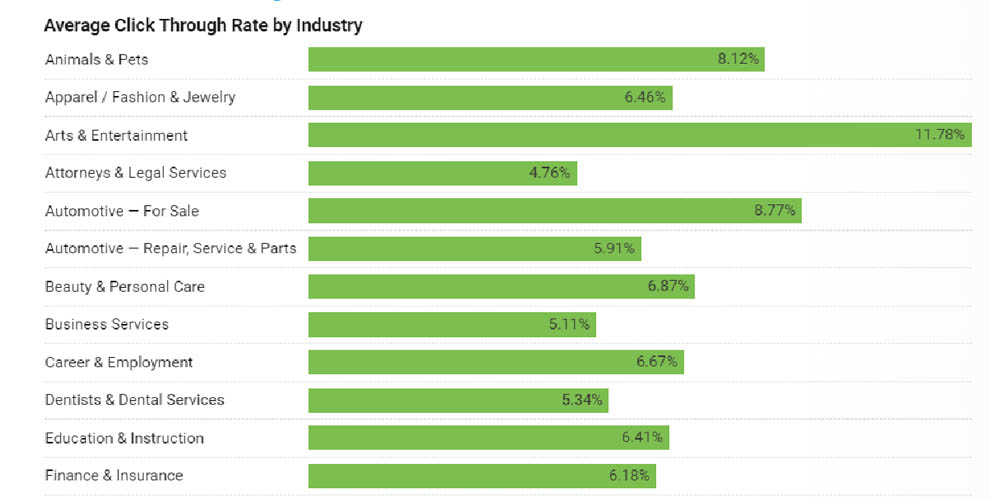
Still, it’s extraordinary to see how the average CTR has increased. In 2015, the average CTR amounted to 1.35%, a clear indicator of growth throughout the years.
Still, the average CTR for display network ads is lower than for search ads. KPIs outline that CTR in displays falls below 1%, commonly around 0.46%.
How to Determine Your Ideal Click-Through Rate?
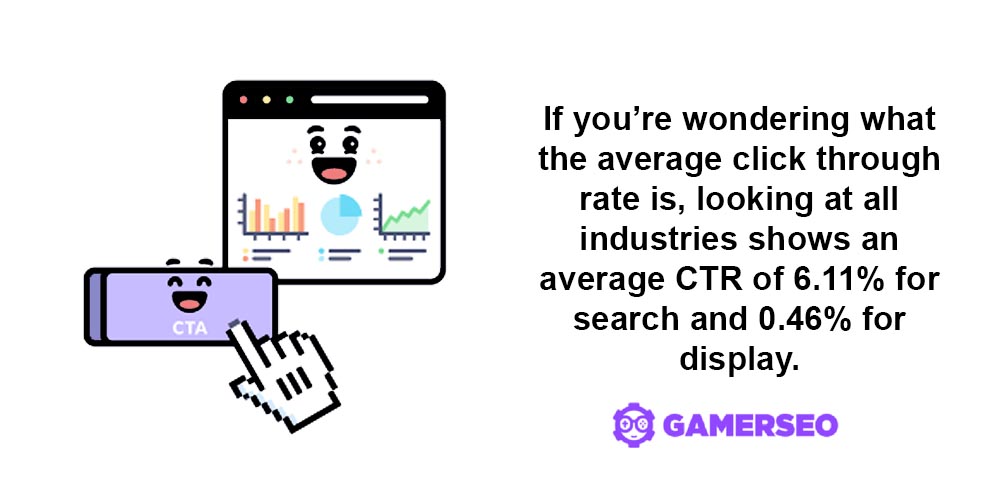
Each industry and area has a different and average click-through rate that depends on many factors. Consequently, determining this average CTR takes and involves much effort and resources.
A good CTR is relative to:
- The industry;
- Main keywords your business is bidding on;
- Marketing campaigns related to PPC accounts.
Using branded keywords leads to double-digit click-through rates when navigators or potential clients seek a specific product or brand. On the other hand, no-branded keywords show an average CTR of less than 1% on most platforms.
Google Ads CTR Best Practices
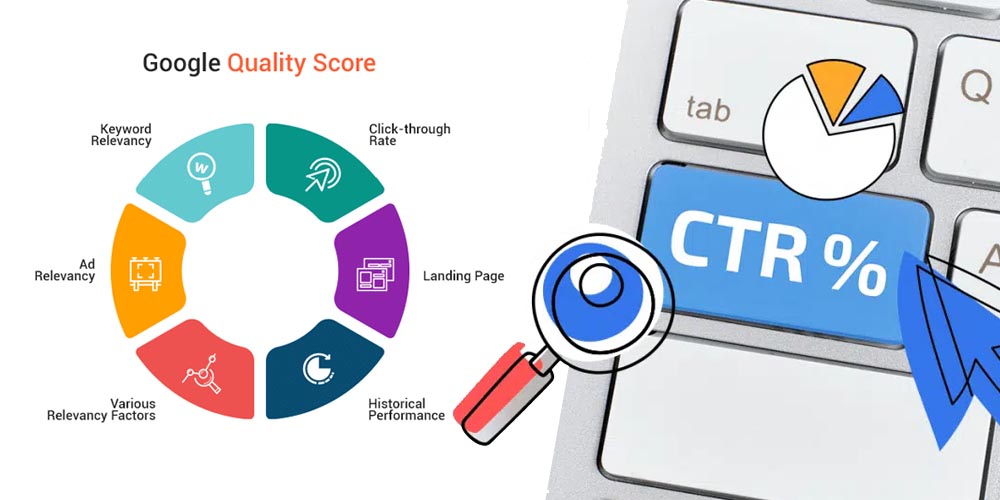
When evaluating your CTRs, you may notice that the percentage of clicks is not what you expect. CTR may be low due to many factors. Below, you’ll find best practices to generate clicks and increase your ads’ click-through rate.
Pay Special Attention to Search Ads
The clickthrough rate corresponding to search ads is typically higher than display ads because the first one is closer to customer intents and generates more leads and conversions. Moreover, search ads bring more valuable information to the customer since they contain more data lines, benefits, characteristics, the business’s physical location, etc.
Hire a Professional Marketing Agency to Improve Average Click-Through Rates
Practices such as improving the conversion rate and CTR are necessary for marketers who want to perform successful PPC marketing campaigns. Still, getting a high CTR also involves other factors beyond the control of non-professionals. Thus, working with a professional marketing agency is crucial to improving performance regarding CTR and other metrics.
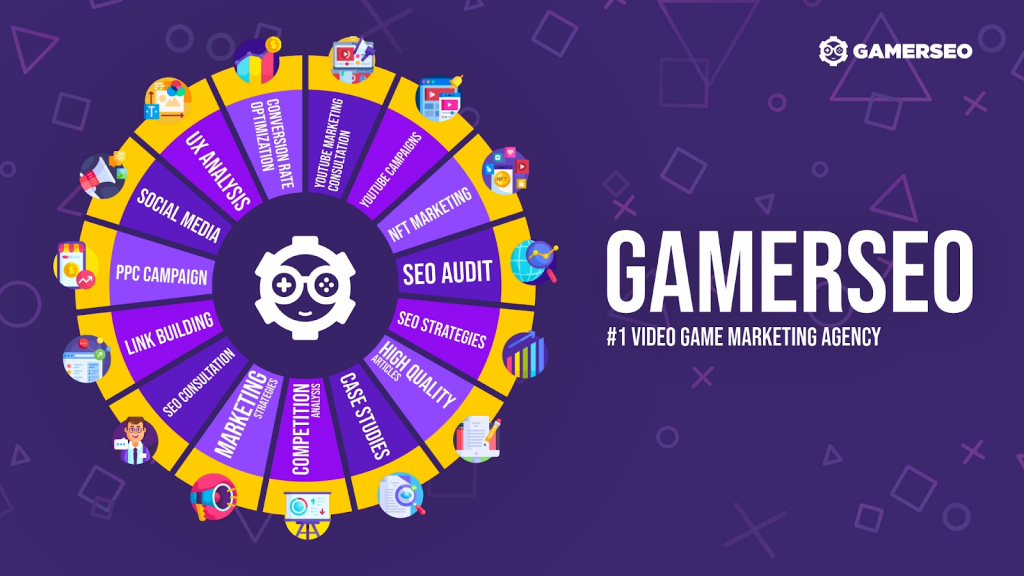
A company like GamerSEO will help you find better keywords for your ads, improve CTR, and create high-quality copies while considering your industry benchmarks. Our team members will also analyze the factors that make your campaign reach the best CTR possible and provide a complete report of what aspects you should improve and what keywords you must bid on.
Different industries have different characteristics, and in GamerSEO, we focus on factors that determine success in the tech and gaming industries. With the help of professionals, you’ll boost your CTR results.
Create Ads for “Soft” Conversions
Ads linked to “soft” conversions, such as the opportunity to get a guide or a beta version, generally generate higher click-through rates than ads tied to expensive conversions. The reason for this is that potential customers prefer to test products before completing a purchase. Creating more ads with “soft” content may drive a higher CTR.
Use Brand Keywords
We discussed keywords in a previous paragraph but must delve into one crucial point. Highlighting your brand using directly related keywords commonly leads to higher click-through rates and increases overall Google Quality Score. This way, customers and potential leads can easily identify your products and link them to a particular benefit.
Final Thoughts
High CTRs mean better results in any PPC marketing campaign your business can implement. These indicate the percentage of people who saw and effectively clicked on the ad. Thanks to this information, your business can also establish the right budget and calculate a more accurate cost-per-click, seeing the bigger picture and being able to generate campaigns over months.

A PPC specialist who started with organic social media. For several years, the core of his activities are:- Google Ads, Microsoft Ads, Meta Ads, TikTok Ads, Twitter Ads, Linkedin Ads. He has led campaigns with a global reach, e.g. for FootballTeam, G2A, ETOTO, as well as many smaller campaigns in the sports, construction and financial industries. Has full focus on ROAS. Privately, a fan of football, history of wars and Star Wars.

